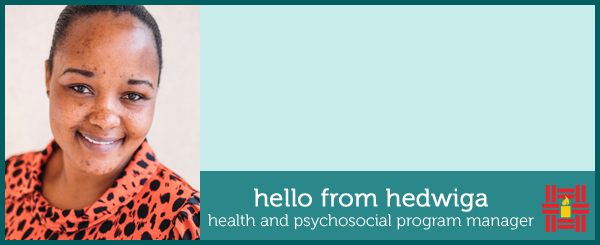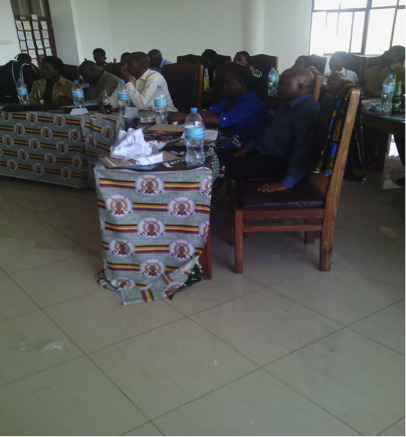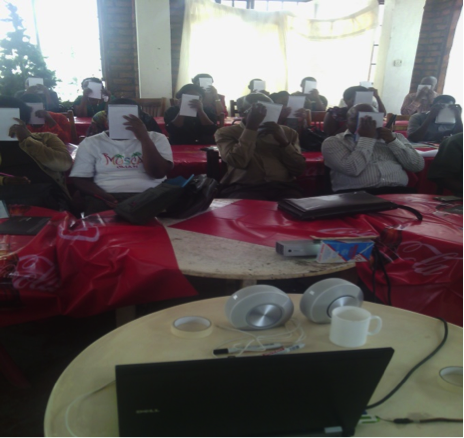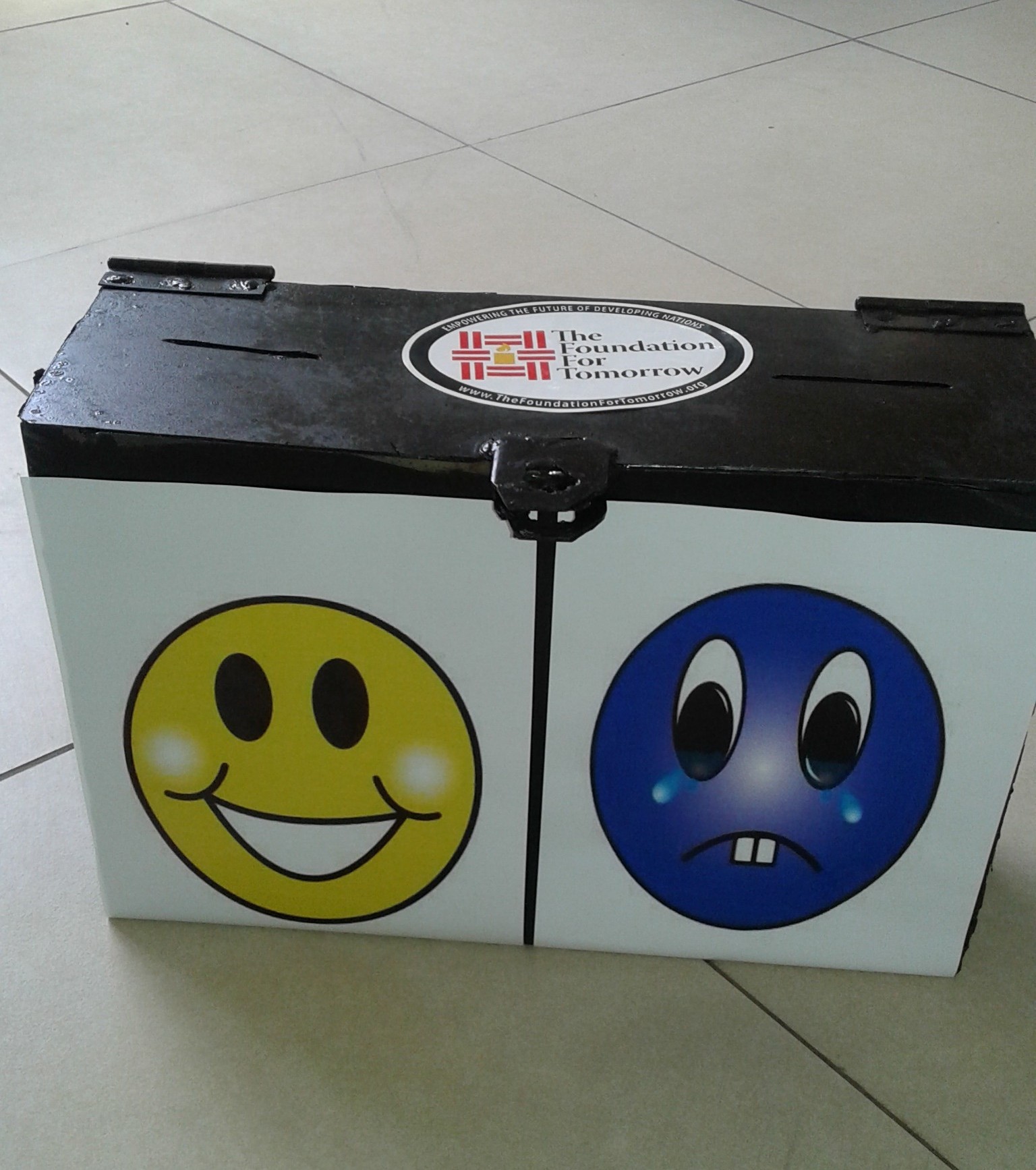
July 10, 2015
Being the Head of our Health and Psychosocial Programs, I am always aware of our children’s best interest and how to support their emotional needs. Happy and Sad Boxes are an approach established in schools to offer children an opportunity to communicate and share their rights, and/or the violation of their rights, as well as best practices happening at their school.
Creating a child friendly school environment will automatically enhance educational performance. International laws against torture are all applicable to children, including the principles that govern detention conditions, such as the Convention on the Rights of the Child. Having this in mind, TFFT decided to create a specific programme for children. This was done after recognizing that schools did not have sufficient information on torture and other violent acts committed against children. This contributes to their health, behaviour, and academic performance in school. Sadly, various NGOs and government systems used an interpretation of Article 1 of the Convention against Torture that did not take into account the specific situation of children.
Moreover, even though the Committee on the Rights of the Child enjoyed broad jurisdiction on the situation of children, it could not address individual cases. Further, although the special mechanisms (e.g., Child right committees, social workers and working groups) could be alerted of all types of cases, very few were communicated by children themselves. With this in mind, TFFT decided to conduct a training for 15 Government schools in the Meru District on how to handle these situations. 10 are primary school and 5 are secondary schools. The training was done for 30 representatives. Teachers and Ward Education Coordinators were there to represent their schools/wards. Then they went back to train fellow teachers and students, expanding the reach of the training.
The main objectives of the Happy and Sad Boxes programme are:
- Understand the meaning of child abuse, types and its effects.
- Explore sources of abuse and positive practices happening in their areas
- Understand their roles and responsibilities in protecting children.
- Understand the processes and procedures for intervention of child abuse.
- Provide awareness on child protection to the students in their respective schools and areas of jurisdiction.
- Establish happy and sad boxes approach in schools
- To provide physiological support to victims
- To protect children from torture and other forms of violence through prevention, denunciation and advocacy in order to create community pressure against the District so that violence is avoided or ceases.
- To promote and defend children’s rights by reinforcing the protection of children who are victims of torture or threatened by torture and other cruel, inhuman or degrading treatment or punishment.
The following schools participated;
- Chemchem Primary School
- Kimandafu Primary School
- Sing’isi Primary school
- Uraki Primary School
- Malula Primary School
- Maji ya Chai Primary School
- Leganga Primary School
- Nambala Primary School
- Moivaro Primary School
- Nkwandrua Primary School
- Sing’isi Secondary School
- Uraki Secondary School
- Kitefu secondary school
- Muungano Secondary School
- Nkwandrua Secondary School
The following themes were covered: attitude change, child protection concept, the meaning of child abuse, sources and effects, national and international conventions of child protection, and Child Helpline International approach (Happy and Sad boxes).
In the process of supporting the participants to change attitudes towards children, the starfish story exercise was shared. In this story, the first character (woman) showed a positive attitude to rescue starfish that washed away from the sea while the second (old man) had a negative attitude ignoring what the woman was doing. After observing the woman for a while, he changed his mind and decided to join her to rescue the starfish. The community around the shore (third character) were attracted and joined the exercise where they rescued even more starfish. Participants reflected the story in their real life and commented that in our communities some adults are not fulfilling their responsibilities of caring their children. They declared that children are vulnerable and thus need collective efforts in supporting and protecting them.

The child protection concept was captured through a video where a cattle of the buffalo rescued a calf from a lion pride after a long battle. In reflection to child protection, it showed that adults need collaborative efforts, commitment, and confidence in taking action towards protecting children.
In the plenary session, the meaning of child abuse, sources and effects was discussed. It was observed that abuse is any action or words intended to children that can harm their well being and development. It was shared that there are four types of child abuse which are physical, sexual, emotional, and neglect. Child maltreatment was found to happen in the families, schools, faith based communities such as churches, mosques and other areas in the community. The effects of child abuse were discussed in details whereby physically, a child can experience wounds, bruises, and disability. Psychologically, abuse can cause a child to demonstrate poor academic performance, poor social interaction with peers, self harm, destructive behaviors, substances abuse among other effects.
The participants were taken through various sources of child rights from international, regional and national. International wise there is the United Nation Convention of Rights of Children (UNCRC) which was established in 1989. At regional level there is African Charter on Rights and Welfare of the Child (ACRWC). At National level references were made from National Constitution (1977) and Law of Child Act No. 21 of 2009.

Participants were then introduced about the concept of Happy and Sad boxes, which is an approach adopted from Child Helpline International (CHI) (a global service to help children in need of care and protection). This approach in our context was implemented by using boxes established in schools to offer children an opportunity to communicate and share their rights, violation for action, and good practices.

Teachers were happy about the training and they committed to pass the training to their fellow teachers and students. In the 1st day teachers were a bit reluctant on correcting children misbehaviour without corporal punishment (common place in schools throughout Tanzania.) After the second day and of a lot of exercises and training, teachers began to change their tune. Our hope is that some of the teachers will find alternative ways to discipline children, doing away with corporal punishment all together.
TFFT is providing these Happy/Sad boxes to schools. Teachers at these schools will continue training for other teachers and students in school. Currently, boxes have been distributed to four schools. The schools are on break now, when they reopen, we will finish distribution to the rest the schools.